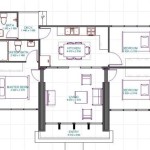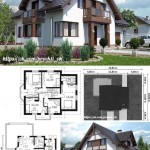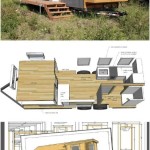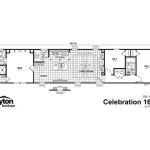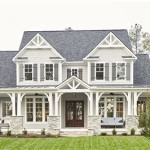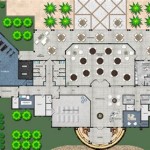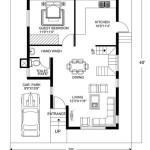Essential Aspects of Multi Story Commercial Building Plans
Designing and planning a multi-story commercial building is a complex undertaking that requires careful consideration of various aspects. From structural integrity to environmental regulations, several key elements must be addressed to ensure a successful and efficient construction process. This article highlights the essential aspects to consider when developing plans for multi-story commercial buildings.
1. Structural Design and Engineering
The structural design and engineering of a multi-story commercial building are paramount for ensuring its stability and safety. Structural engineers analyze the building's weight, height, and intended use to determine the appropriate materials and construction methods. They consider factors such as wind loads, seismic activity, and material strength to ensure the building can withstand various forces and maintain structural integrity.
2. Floor Plan and Space Allocation
The floor plan and space allocation of a multi-story commercial building play a crucial role in its functionality and efficiency. Architects and designers work together to create floor plans that optimize space utilization, allowing for efficient tenant layouts and smooth traffic flow. They consider factors such as the number of tenants, the nature of their businesses, and the required space for each unit.
3. Building Systems and Infrastructure
Multi-story commercial buildings require comprehensive building systems and infrastructure to support the needs of occupants. These systems include electrical, mechanical, plumbing, lighting, and fire protection. Architects and engineers collaborate to design and integrate these systems seamlessly into the building's structure, ensuring efficient operation and occupant comfort.
4. Exterior Design and Building Envelope
The exterior design of a multi-story commercial building contributes to its aesthetic appeal and brand identity. Architects consider factors such as the building's surroundings, the intended user experience, and local building codes. They select materials and finishes that enhance the building's appearance while meeting durability and energy efficiency requirements.
5. Sustainability and Energy Efficiency
Sustainability and energy efficiency have become increasingly important considerations in multi-story commercial building design. Architects and engineers employ various strategies to reduce energy consumption and environmental impact. These strategies may include incorporating energy-efficient lighting systems, utilizing renewable energy sources, and implementing water conservation measures.
6. Accessibility and Inclusivity
Multi-story commercial buildings must be accessible and inclusive to all users, regardless of their abilities or disabilities. Architects and designers adhere to building codes and regulations to ensure that the building features accessible entrances, elevators, restrooms, and other amenities. They also consider the needs of individuals with sensory impairments and provide appropriate accommodations.
7. Safety and Security
Safety and security are paramount concerns in multi-story commercial buildings. Architects and engineers incorporate various security measures, such as access control systems, surveillance cameras, and fire alarm systems. They also consider the building's location and周边environment to minimize security risks and ensure occupant safety.
8. Construction Planning and Management
The construction planning and management of a multi-story commercial building involve multiple stakeholders, including architects, engineers, contractors, and project managers. Proper planning and coordination are essential to ensure a smooth and efficient construction process. The project team establishes a construction schedule, allocates resources, and monitors progress to ensure timely completion within the budget.
9. Regulatory Compliance
Multi-story commercial building plans must comply with various local, state, and federal regulations. These regulations cover aspects such as building codes, zoning laws, safety standards, and environmental protection requirements. Architects and engineers work closely with building officials and regulatory agencies to ensure that the plans meet all applicable requirements and obtain necessary permits.
10. Post-Construction Considerations
Planning for post-construction considerations is essential for the long-term success and sustainability of a multi-story commercial building. Architects and engineers provide detailed specifications for building maintenance and operations, including cleaning protocols, equipment maintenance schedules, and emergency response plans. They also consider factors such as energy audits and upgrades to ensure that the building remains efficient and meets current standards.
In conclusion, designing and planning multi-story commercial building plans require a comprehensive understanding of various aspects, including structural integrity, space allocation, building systems, exterior design, sustainability, accessibility, safety, construction planning, regulatory compliance, and post-construction considerations. By addressing these essential aspects, architects, engineers, and project teams can create buildings that meet the needs of occupants, enhance the user experience, and stand the test of time.
2 Y 8 Units Commercial Building By J S Architectural Services At Coroflot Com Design Exterior Plan Plans

Commercial Building Plans And Designs

Commercial Building Plans And Designs

2 Y Commercial Building

2 Y Commercial Building Design Plan Plans Residential
Example Floor Plan For A Multi Zone Commercial Building Scientific Diagram

Cf33c912232963 5626542b8faa6 Jpg 600 338 Commercial Building Plans Design Plan Modern Architecture

Multi Story Commercial Building Detail 2d View Elevation And Plan Layout Dwg File Cadbull

Commercial Office Buildings Story Building Design Hd Exterior And Architecture

2 Y Commercial And Residential Building Design

